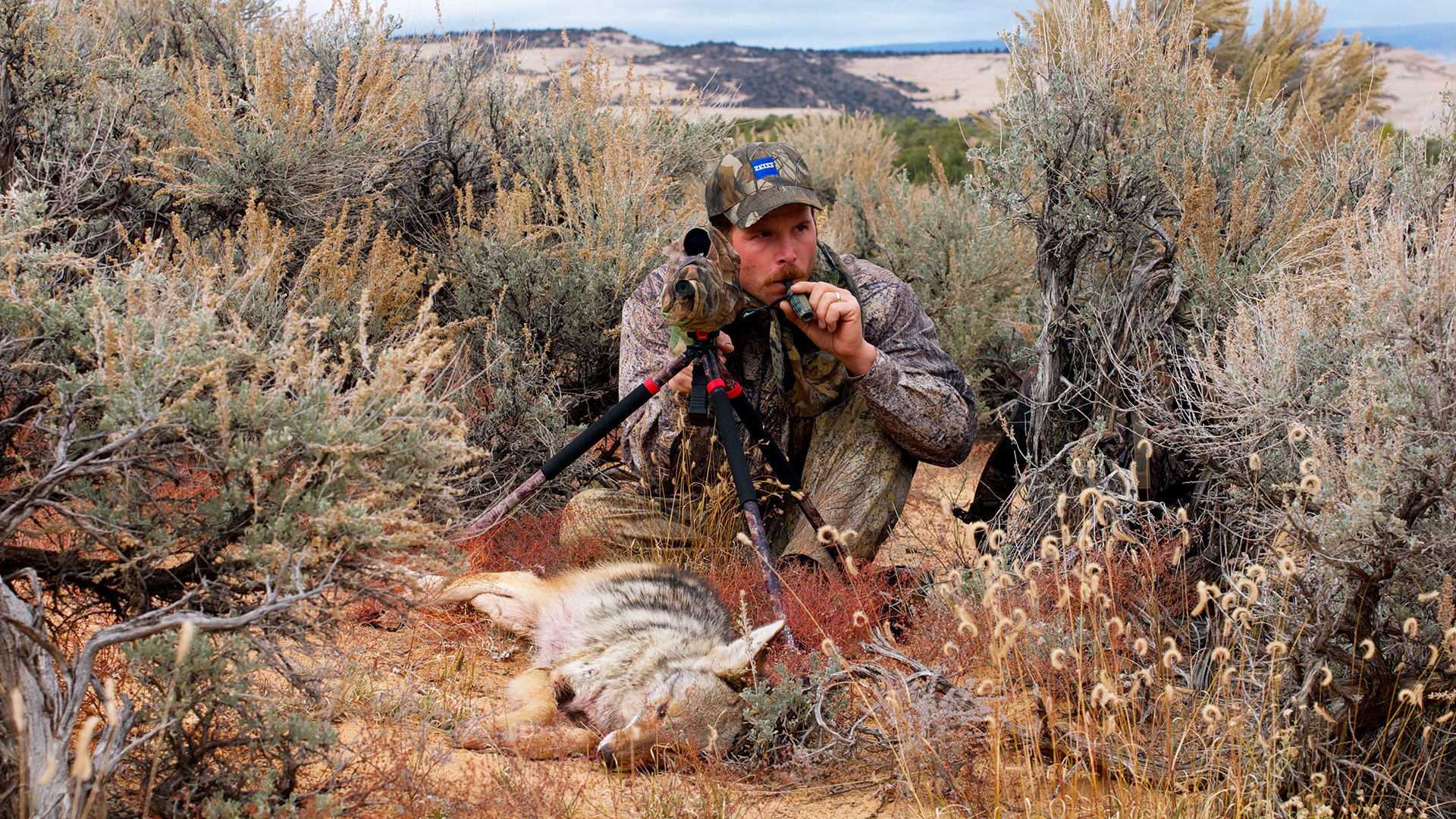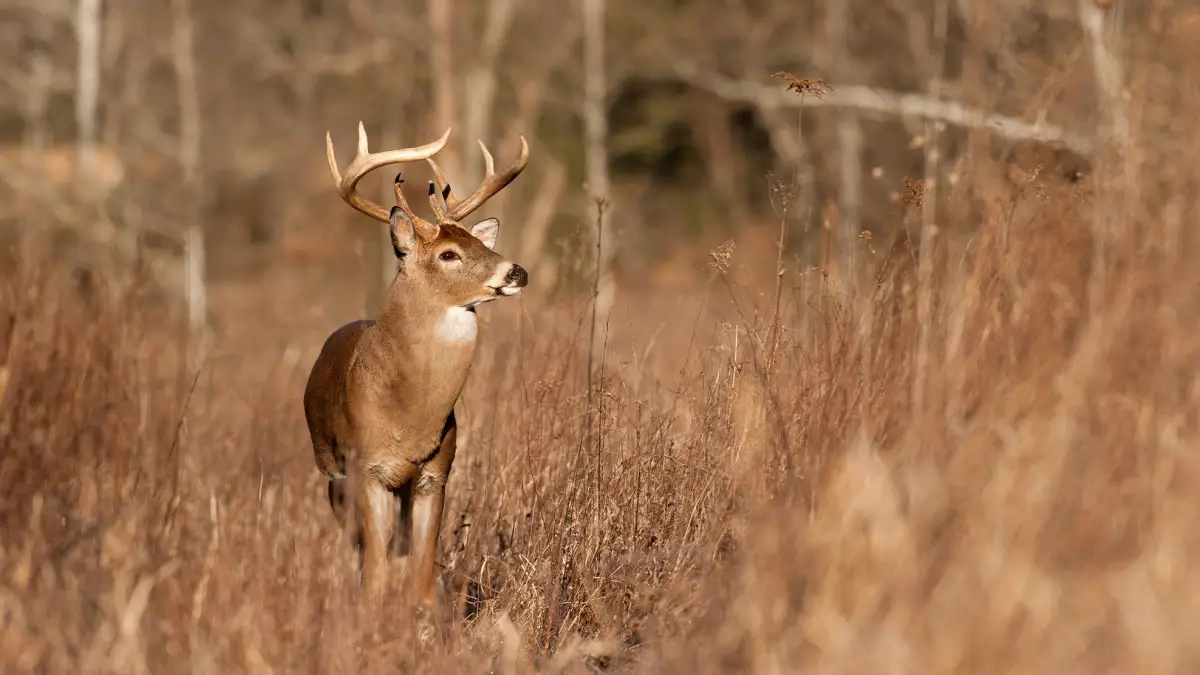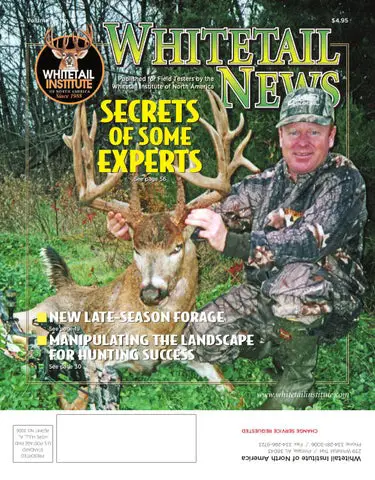
Coyote hunting in Missouri is a year-round activity with no bag limits. Hunters must adhere to regulations set by the Missouri Department of Conservation.
Coyote hunting has become increasingly popular in Missouri, allowing hunters to engage in a challenging sport outside the traditional hunting seasons. It’s considered a vital part of wildlife management in the state. With the adaptable nature of coyotes leading to their abundance, the Missouri Department of Conservation encourages this practice without any imposed bag limits to help control the population.
Aspiring hunters should familiarize themselves with the rules, including the requirement for a permit and the prohibition of specific hunting methods. Staying informed on the latest guidelines ensures a responsible and ethical hunting experience. Safety is paramount, and respecting property boundaries and employing good stewardship are core to the hunting ethos in Missouri.
Contents
- 1 Coyote Hunting Essentials In Missouri
- 2 Coyote Hunting Missouri: Licenses And Seasons
- 3 Scouting Locations For Coyotes
- 4 Effective Coyote Calling Techniques
- 5 Deciphering Predator Response
- 6 Hunting Safety And Etiquette
- 7 Finalizing The Hunt
- 8 Sharing Coyote Hunt Narratives
- 9 Frequently Asked Questions Of Coyote Hunting Missouri
Coyote Hunting Essentials In Missouri
Missouri’s diverse terrain provides an excellent backdrop for coyote hunting, with its mixture of dense woodlands, rolling hills, and open prairies. Hunters can capitalize on these varied landscapes to track and lure coyotes effectively.
Understanding the behaviour and habits of coyotes is crucial; these animals are known for their intelligence and adaptability. Familiarize yourself with their diet, nocturnal activity patterns, and how they respond to different seasons to increase your chances of a successful hunt.
For an effective hunt, the right gear is indispensable. This includes camouflage clothing, a suitable rifle or shotgun, calls (electronic or manual), and often, decoys. Additionally, consider a comfortable pair of boots, as terrains in Missouri can be rugged.
| Legal Document | Regulation |
|---|---|
| Hunting License | Mandatory for residents and non-residents |
| Season | Year-round hunting allowed |
| Bag Limit | No daily or possession limit |
| Legal Firearms | Regulations vary; check state guidelines |
| Property Permission | Essential for hunting on private land |
Coyote Hunting Missouri: Licenses And Seasons
Missouri offers hunting licenses tailored to residents, non-residents, and youth hunters. Annual and daily hunting permits are the most common types acquired for coyote hunting. There’s a conservation order permit for more dedicated hunters, which includes additional privileges.
Hunting seasons for coyotes in Missouri are generally open year-round with no bag limits, although restrictions may apply in certain areas. It’s essential to verify if any local regulations or special orders affect the intended hunting area.
Hunter education is mandatory for those born on or after January 1, 1967, and must be completed before applying for a hunting license. Missouri offers in-person and online options for this certification process, ensuring hunters are well-prepared and knowledgeable about safety practices and conservation.
Scouting Locations For Coyotes
Scouting locations for coyotes in Missouri demands a strategic approach to ensure successful hunts. Public lands and wildlife areas provide hunters with numerous access points, but it’s essential to familiarize oneself with specific regulations and permitting requirements. Topographical maps and hunting apps serve as invaluable tools for identifying potential hotspots, revealing terrain features that often attract coyotes.
On the other hand, gaining permission to hunt on private property can often lead to less pressured and more abundant coyote populations. It is crucial to secure consent from landowners through respectful communication and to adhere strictly to the guidelines they set forth. Building a rapport with property owners can open opportunities for future hunts and contribute to a mutually beneficial relationship.
Using technology such as GPS applications can also enhance the hunting experience. These apps allow hunters to mark sightings, track movement patterns, and plan strategic setups, increasing the likelihood of success in targeting these elusive predators.
Effective Coyote Calling Techniques
Coyote hunters often debate the merits of mouth calls versus electronic calls. Each method has distinct advantages for drawing in these clever predators. Mouth calls require practice but offer a level of control and improvisation in shrill tones that can be more enticing to coyotes. On the other hand, electronic calls provide consistency and the ability to project sounds, such as distress signals from various prey animals, which can be a game-changer in densely populated coyote areas.
Implementing decoys effectively can increase the success rate of hunts. A stationary decoy paired with distress calls can simulate a vulnerable prey scenario, piquing a coyote’s interest. The movement added to decoys adds realism, but it is crucial to place them downwind to avoid detection strategically. Coyotes are quick to spot discrepancies in their environment.
| Early | Midday | Late Afternoon |
| Short calling sequences | Varied calls, longer intervals | Increased frequency and volume |
The timing and sequence of calls should be tailored to the time of day. Short, subtle calling sequences can be more effective during early hours as coyotes are actively hunting. In contrast, midday requires varied calls with longer intervals in between, while late afternoon might call for increased frequency and volume to capitalize on coyotes’ preparation for night hunting.
Deciphering Predator Response
Interpreting coyote vocalizations is pivotal for successful hunts. Vocal cues such as howls, yips, and barks indicate the animal’s status or mood. A series of quick yips may suggest that a coyote is excited or interacting with other coyotes, potentially flagging an active area for hunters. Conversely, long, drawn-out howls may serve as territorial claims or location beacons to others.
Recognizing signs of coyote presence includes identifying tracks, scat, and signs of predation. Discovering these during scouting can inform effective ambush locations and times. Fresh tracks and scat near water sources or game trails hint at consistent coyote activity.
| Tactics for day hunting | Tactics for night hunting |
| Utilize natural cover and minimize movements | Employ thermal optics or night vision gear |
| Apply call sequences meticulously during peak activity hours | Leverage lighting equipment to spot eyeshine |
Hunting Safety And Etiquette
Practising safe firearm handling while coyote hunting in Missouri is crucial to prevent accidents and ensure a safe experience for everyone involved. Always treat every firearm as if it’s loaded, keep your muzzle pointed in a safe direction, and be sure to identify your target and what’s beyond it.
Ethical hunting practices are the backbone of sustainable hunting activities. Hunters should pursue coyotes without causing unnecessary suffering, utilizing skills that ensure a quick and humane kill. Respect for the animal, the environment, and the laws that govern hunting should always be at the forefront of hunters’ minds.
Navigating interactions with other hunters involves clear communication and respect for each person’s space and hunting strategy. Consider using non-verbal signals to indicate your presence or intentions to nearby hunters. Sharing the land responsibly is key, which includes respecting established hunting territories and following standard courtesy practices.
Finalizing The Hunt
Proper field dressing of coyotes is essential for maintaining the quality of both hide and meat. Begin by making a cut from the sternum to the pelvis, being careful not to puncture the intestines. Remove internal organs, and cool the carcass immediately to prevent spoilage. Ensuring cooling within a couple of hours is critical for meat preservation.
For hide and meat preservation, skin the coyote as soon after the kill as possible and store the hide in a cool, dry place. Salt the flesh side to cure the hide before further processing or selling. Meat should be cooled quickly, cut into smaller portions, and frozen or processed according to personal preferences or state regulations.
Missouri’s legal transport and reporting requirements mandate that hunters check their game within 24 hours of harvest through Missouri’s Telecheck system. Documentation should always be carried out during transportation. It’s essential to confirm the details as state regulations can vary and may be subject to changes.
Sharing Coyote Hunt Narratives
Sharing Coyote Hunt Narratives within Missouri’s hunting community is a beacon for those eager to learn and participate. Newcomers and seasoned hunters find value in exchanging tales that offer insight into local practices and the nuances of tracking these clever predators. Exploring the rich experiences of others not only enhances your own skills but also fosters a profound respect for the dynamic Missouri wilderness.
Stories of success and challenges are woven into the fabric of hunting culture and serve as educational tools for those looking to perfect their approach. These narratives showcase the importance of patience, strategy, and respect for wildlife, contributing to effective conservation efforts. Participating actively within this community encourages responsible hunting, ensuring a balance in ecosystems where the coyote plays a pivotal role.
Frequently Asked Questions Of Coyote Hunting Missouri
Is Coyote Hunting Legal In Missouri?
Coyote hunting is indeed legal in Missouri year-round. No limits, seasons, or permit requirements exist for hunting coyotes on private property. Hunters should ensure they comply with local regulations.
What Equipment Is Required For Coyote Hunting?
For hunting coyotes, a centerfire rifle or shotgun is typically used. Hunters may also use calls, decoys, and camouflaged clothing. Night vision equipment is permitted for coyote hunting in Missouri as well.
Can You Hunt Coyotes At Night In Missouri?
Yes, hunting coyotes at night is legal in Missouri. Electronic calls and night vision devices are allowed. However, hunters must not use artificial light from vehicles or hunt from roadways.
Do You Need A Permit To Hunt Coyotes?
No special permit is needed to hunt coyotes in Missouri for residents. Non-residents, however, require a Small Game Hunting Permit or a Nonresident Furbearer Hunting and Trapping Permit.
Coyote hunting in Missouri offers both challenges and opportunities. As you prepare for your next adventure, remember the importance of ethical practices and local regulations. Embrace the rugged beauty of Missouri’s landscape and the thrill of the hunt. Stay safe, respect nature, and enjoy the pursuit of this crafty predator.


